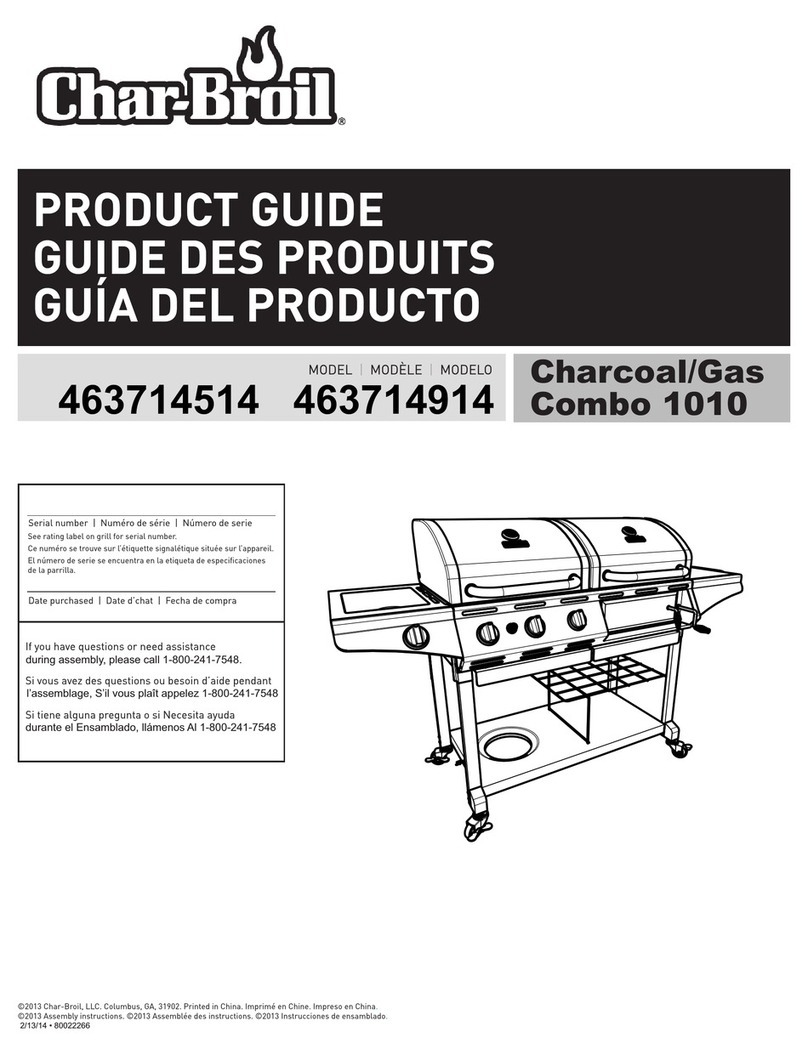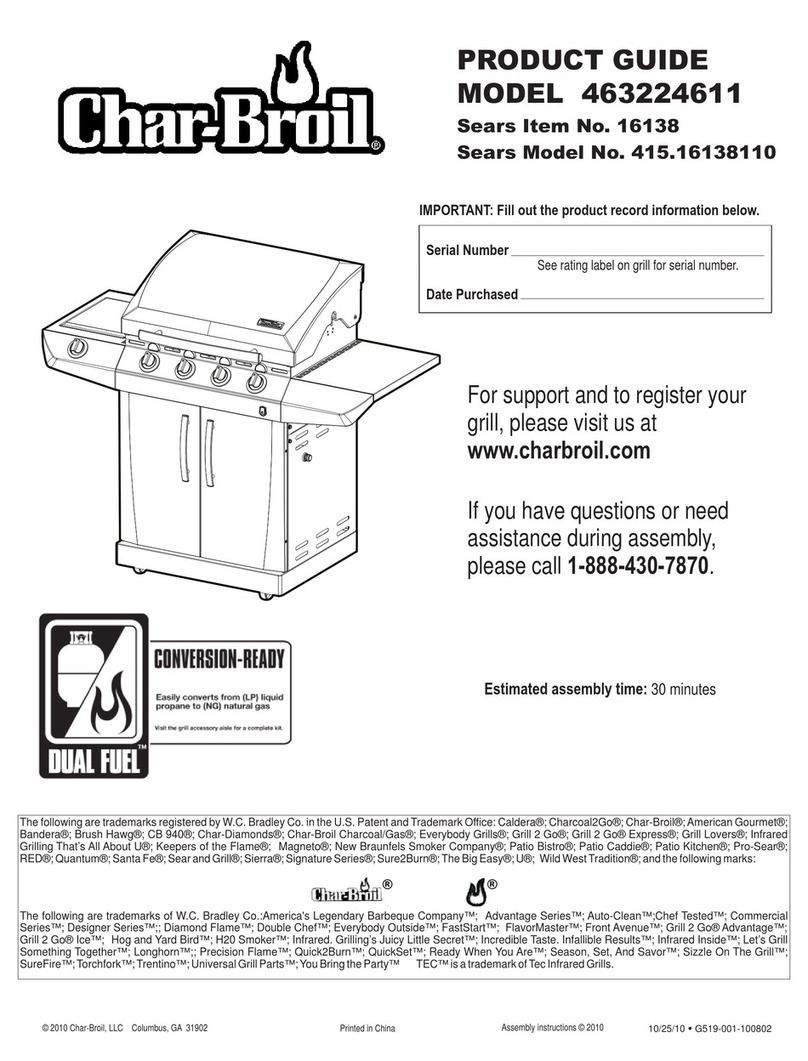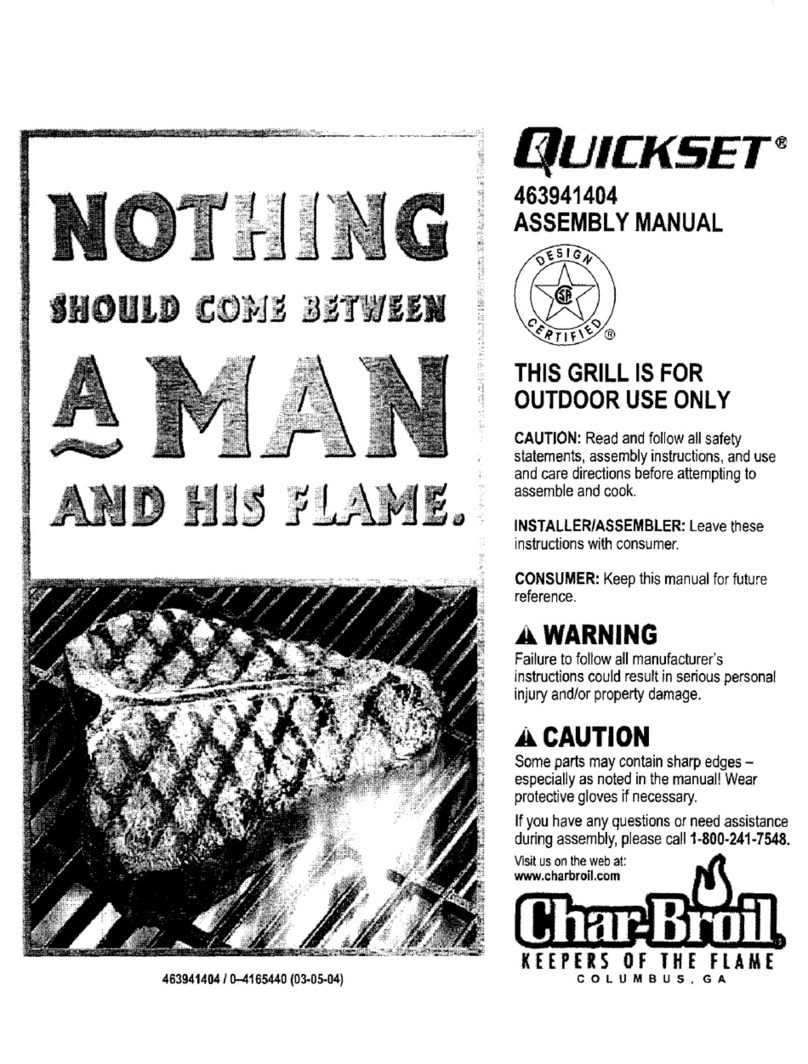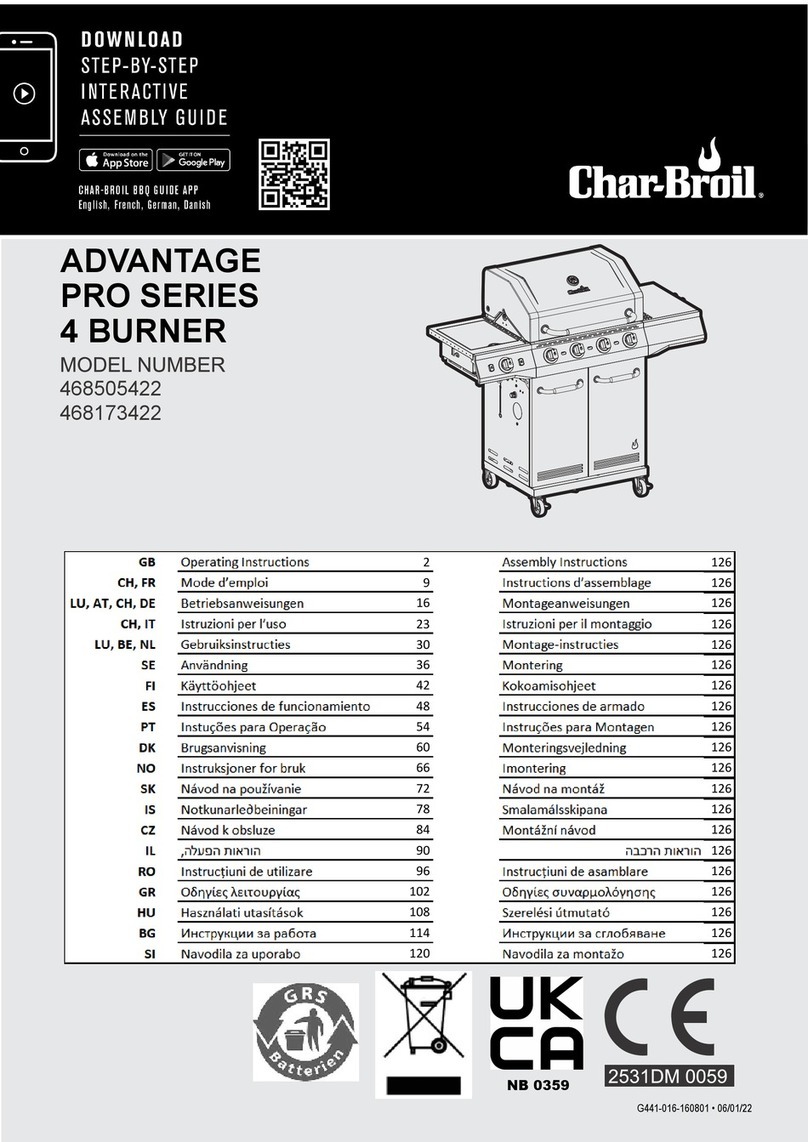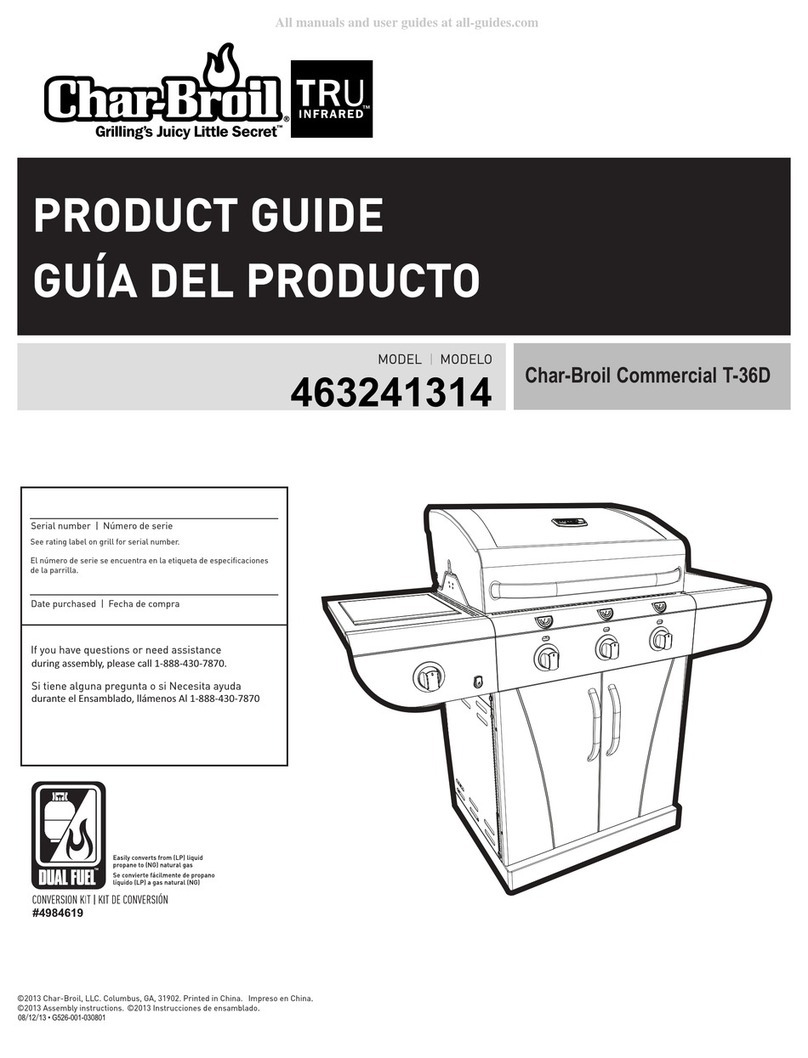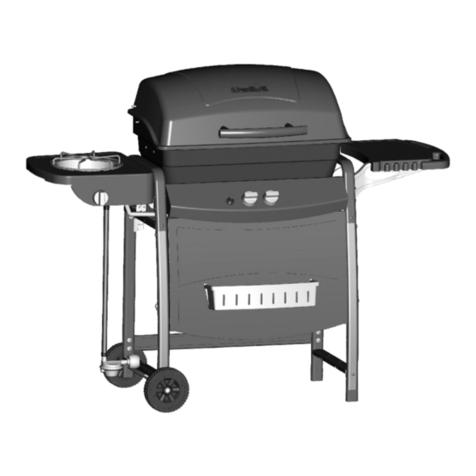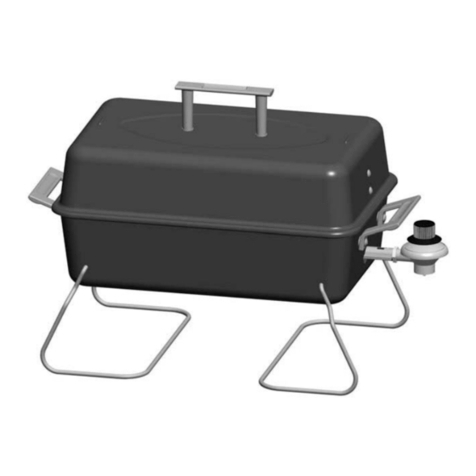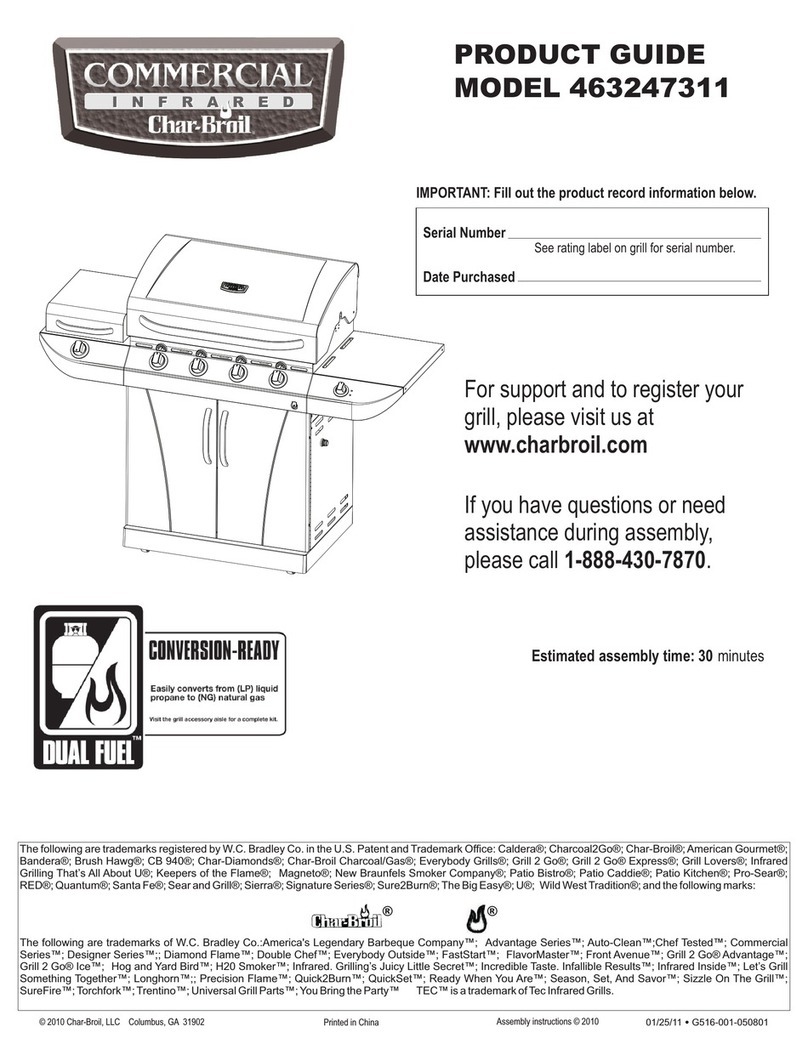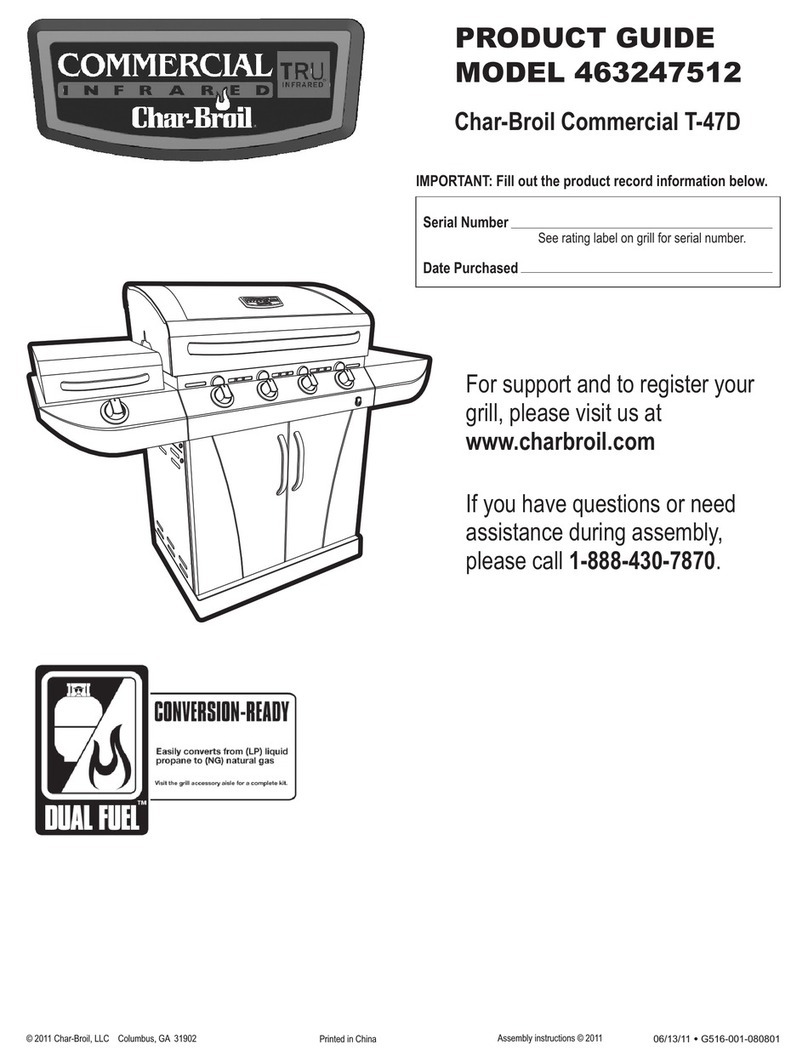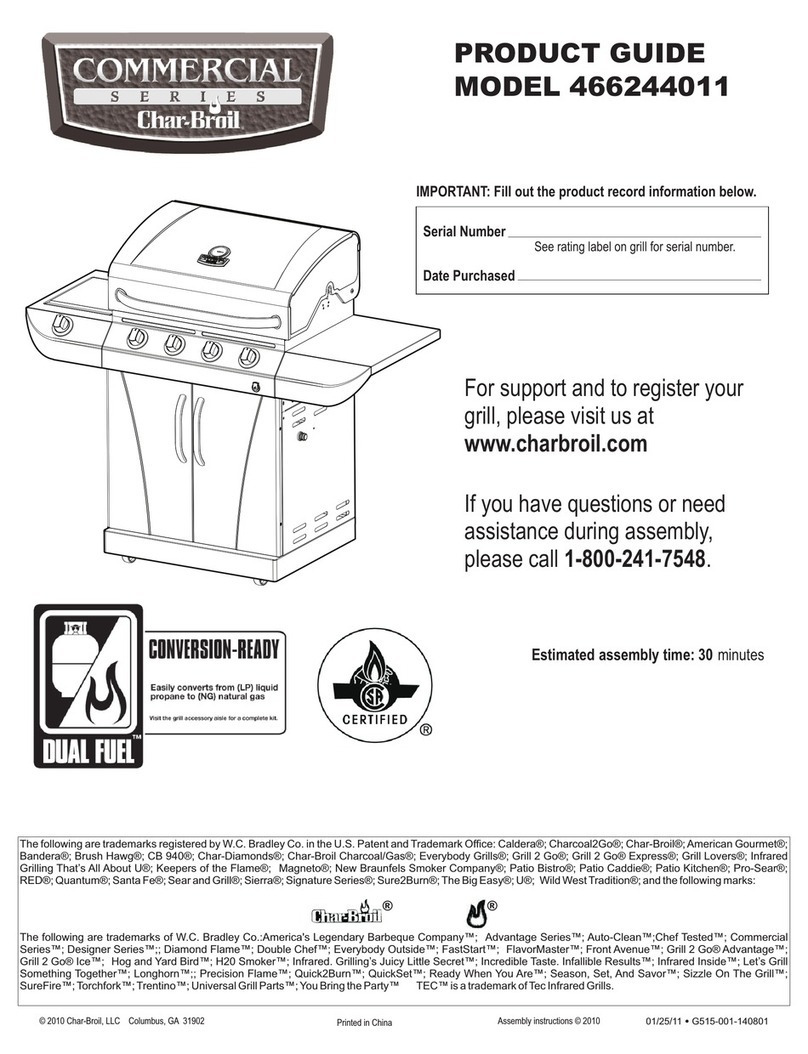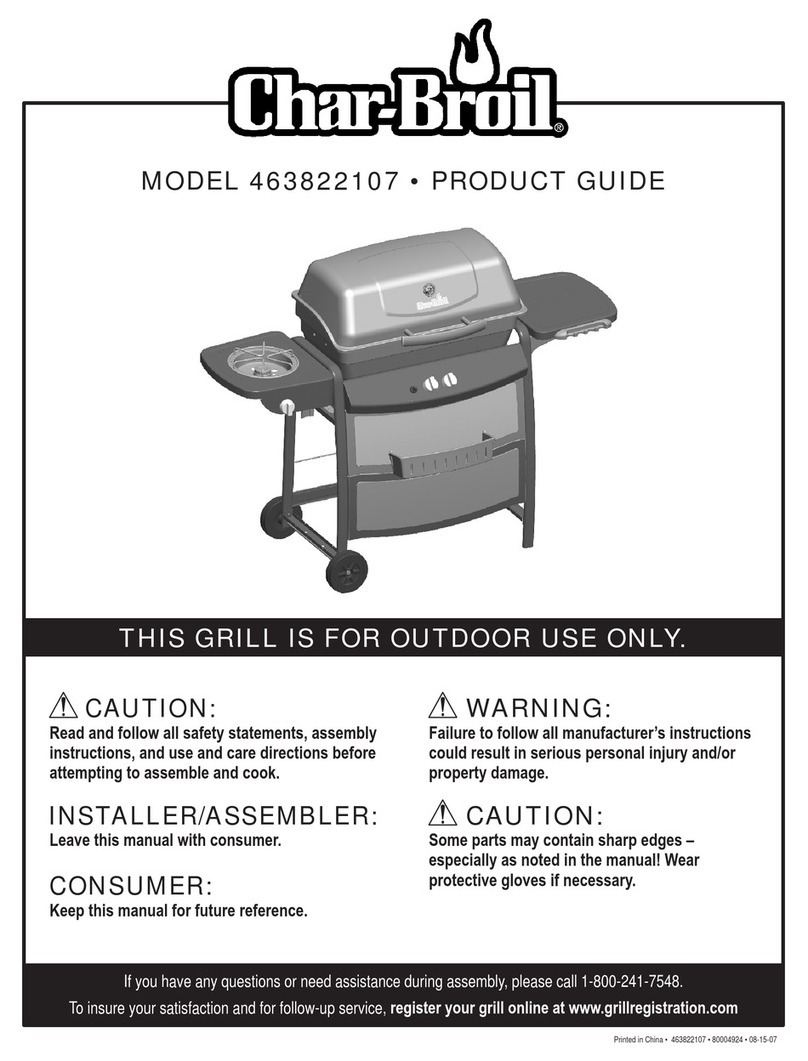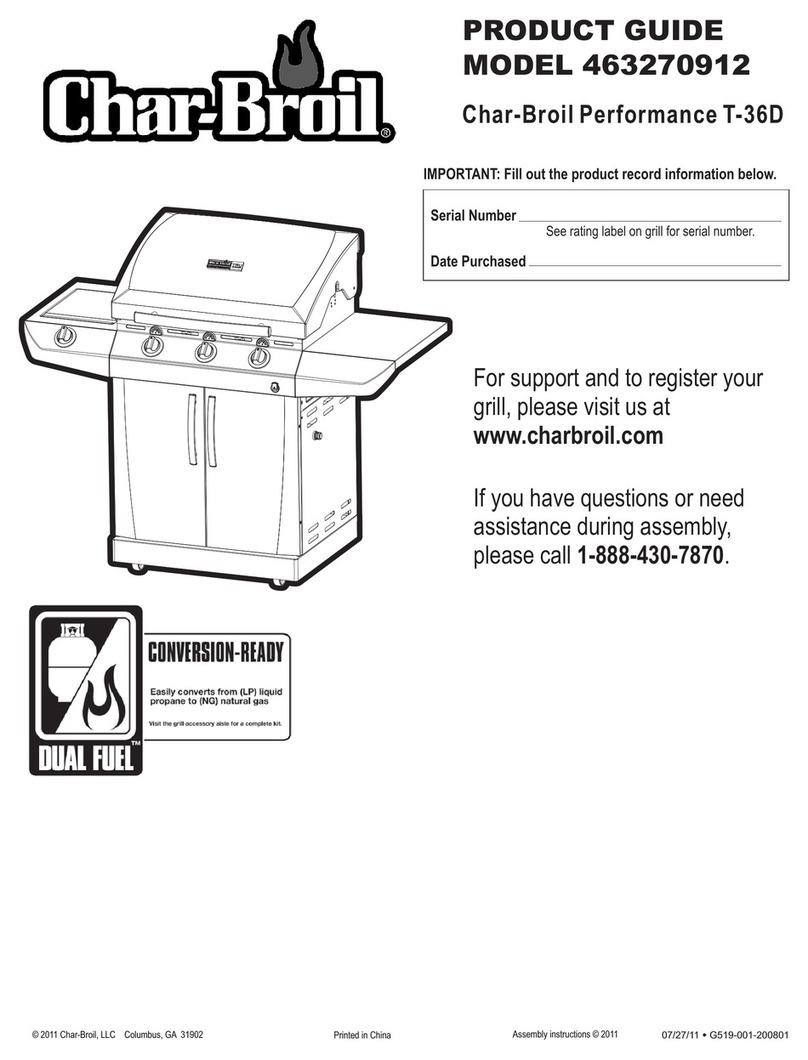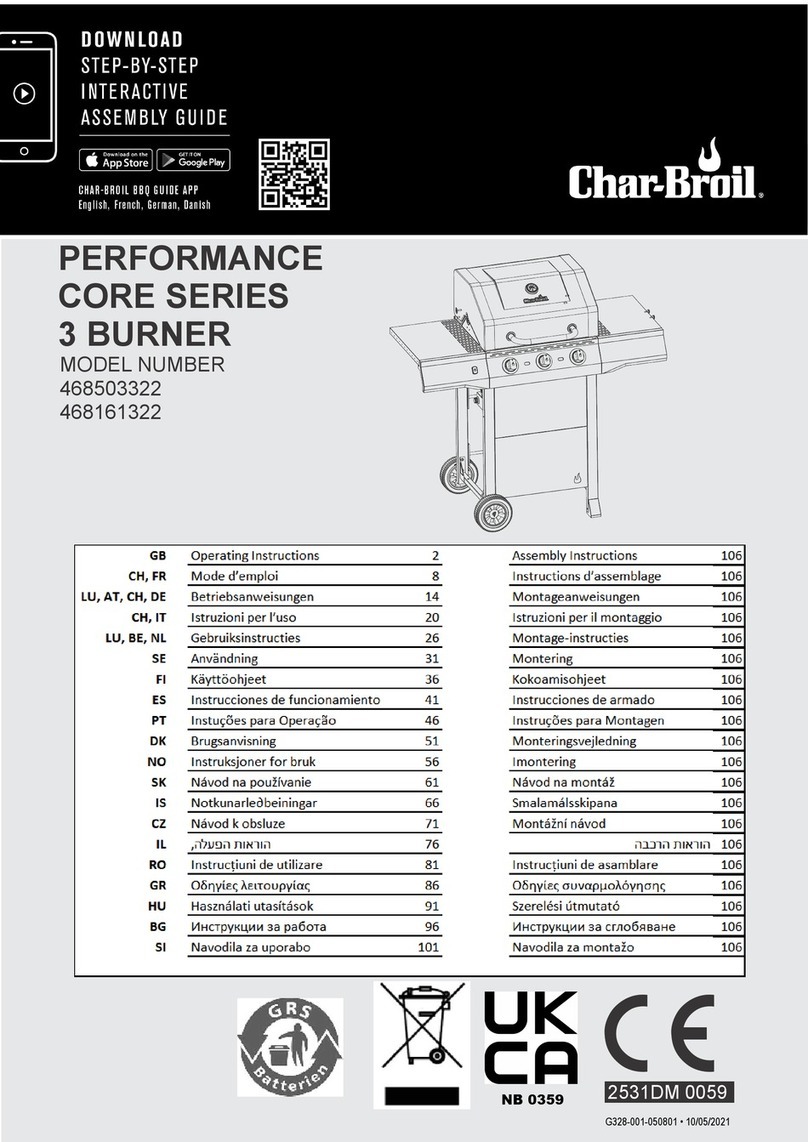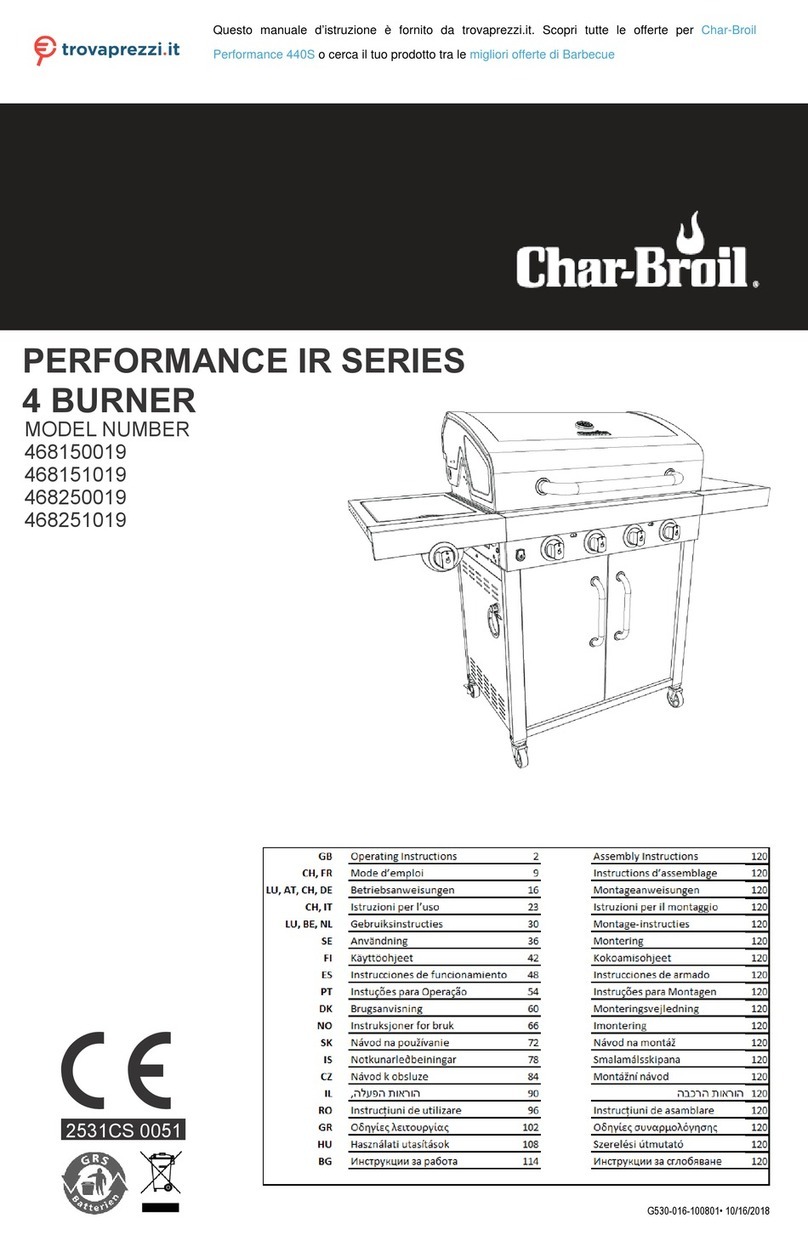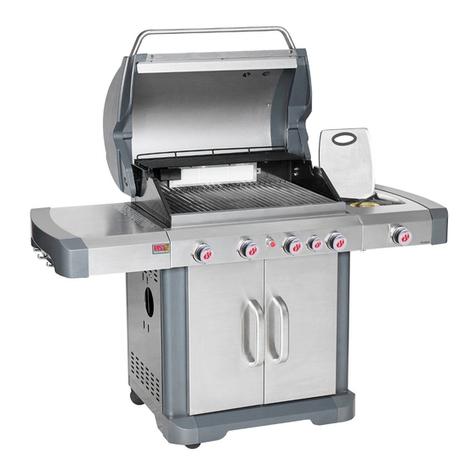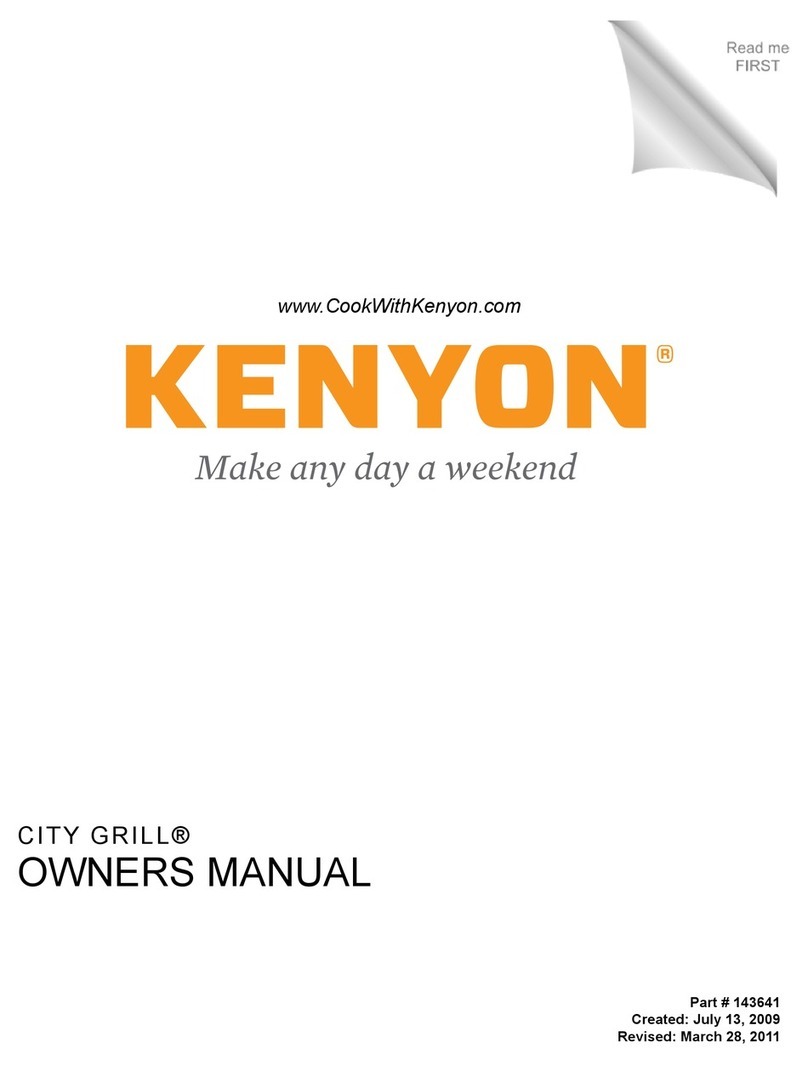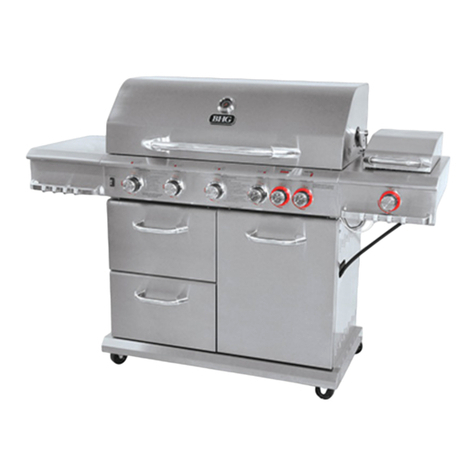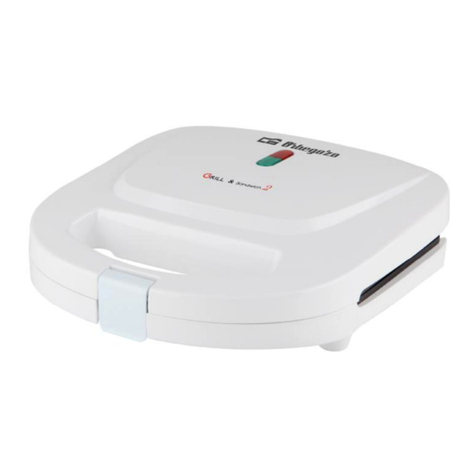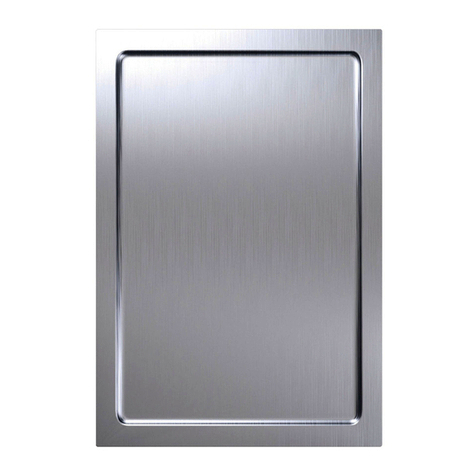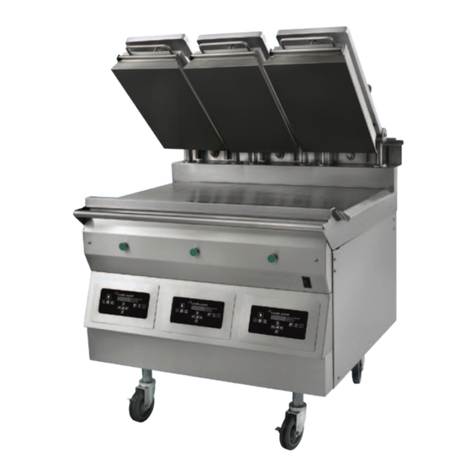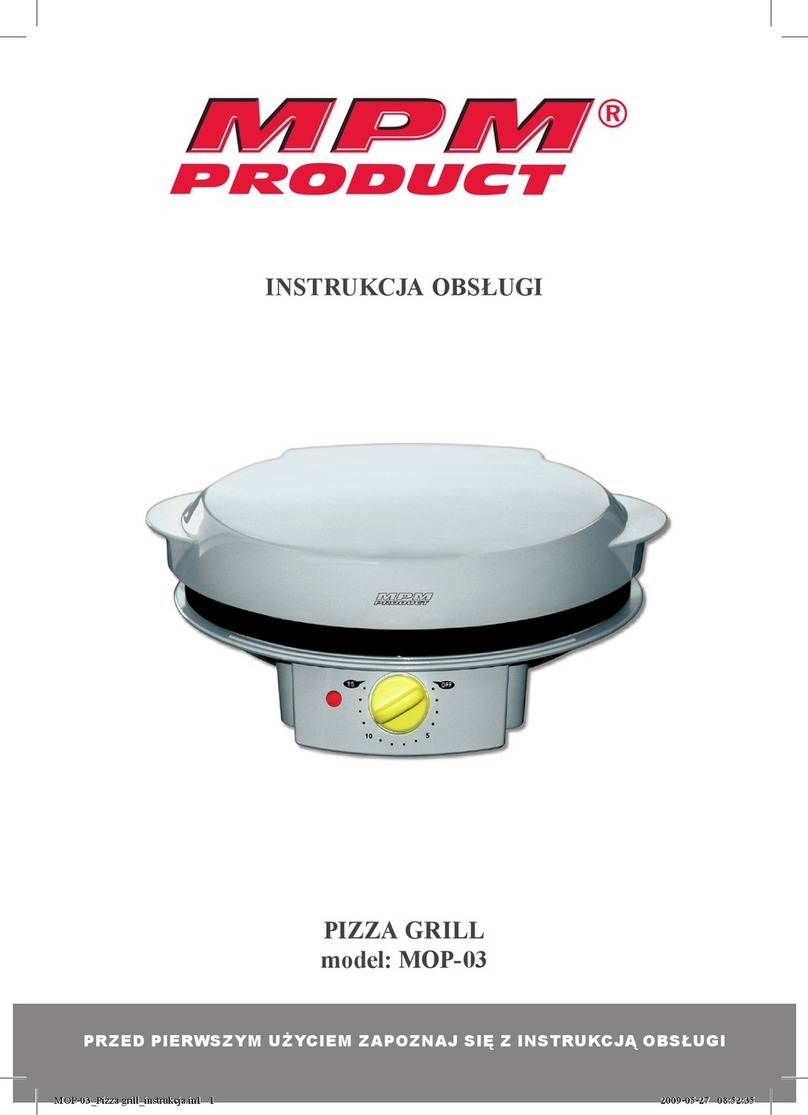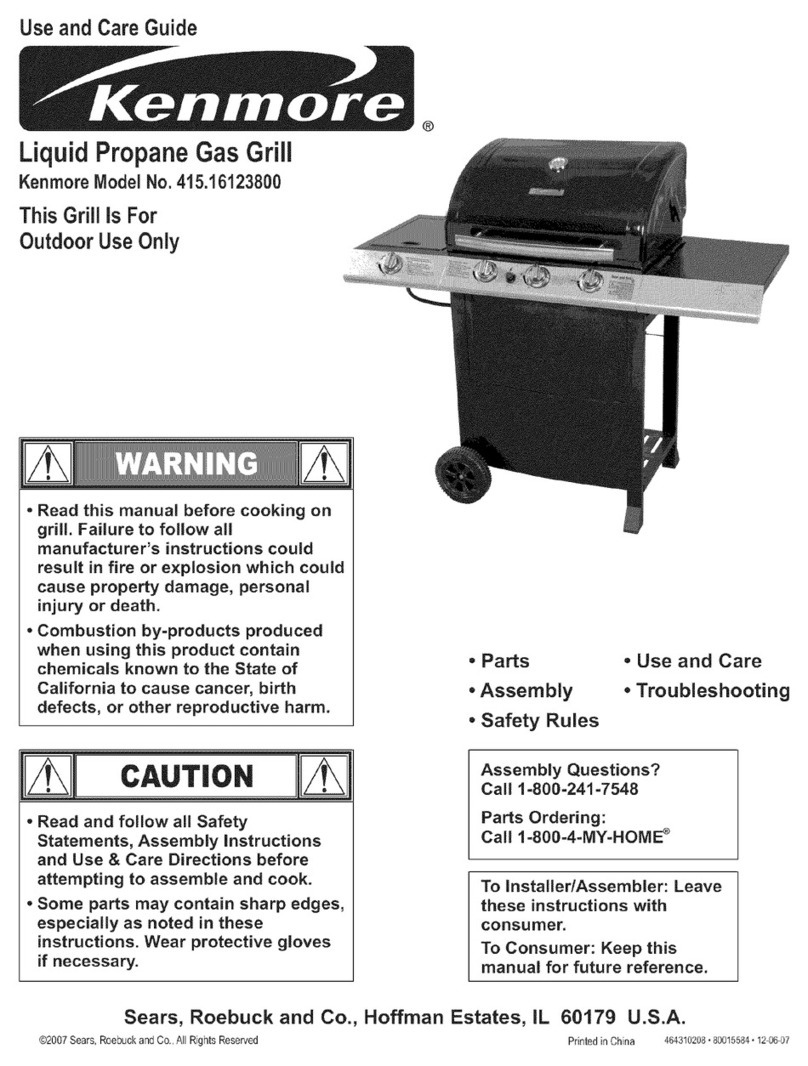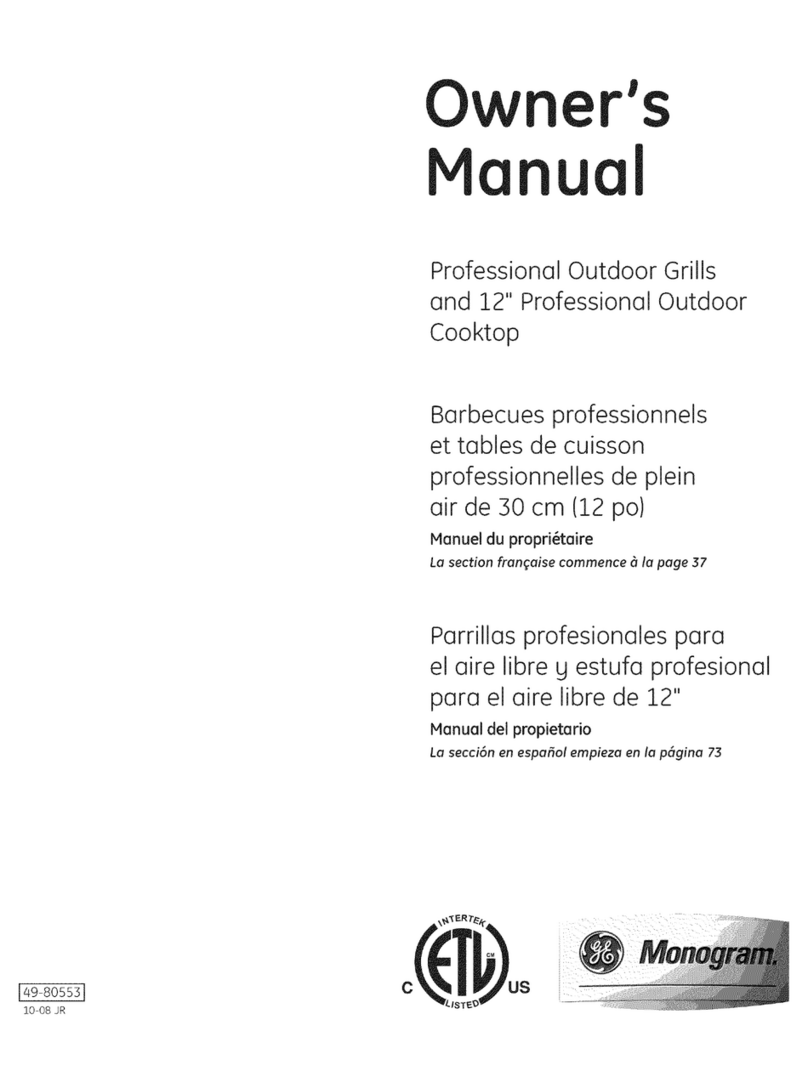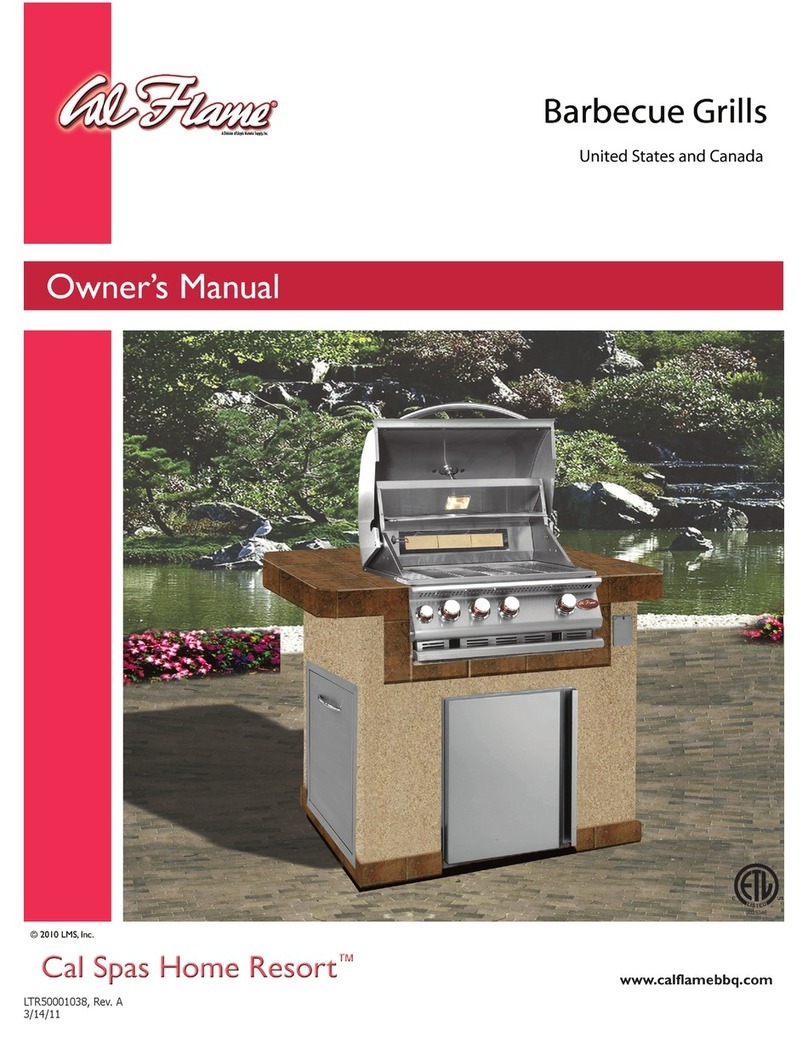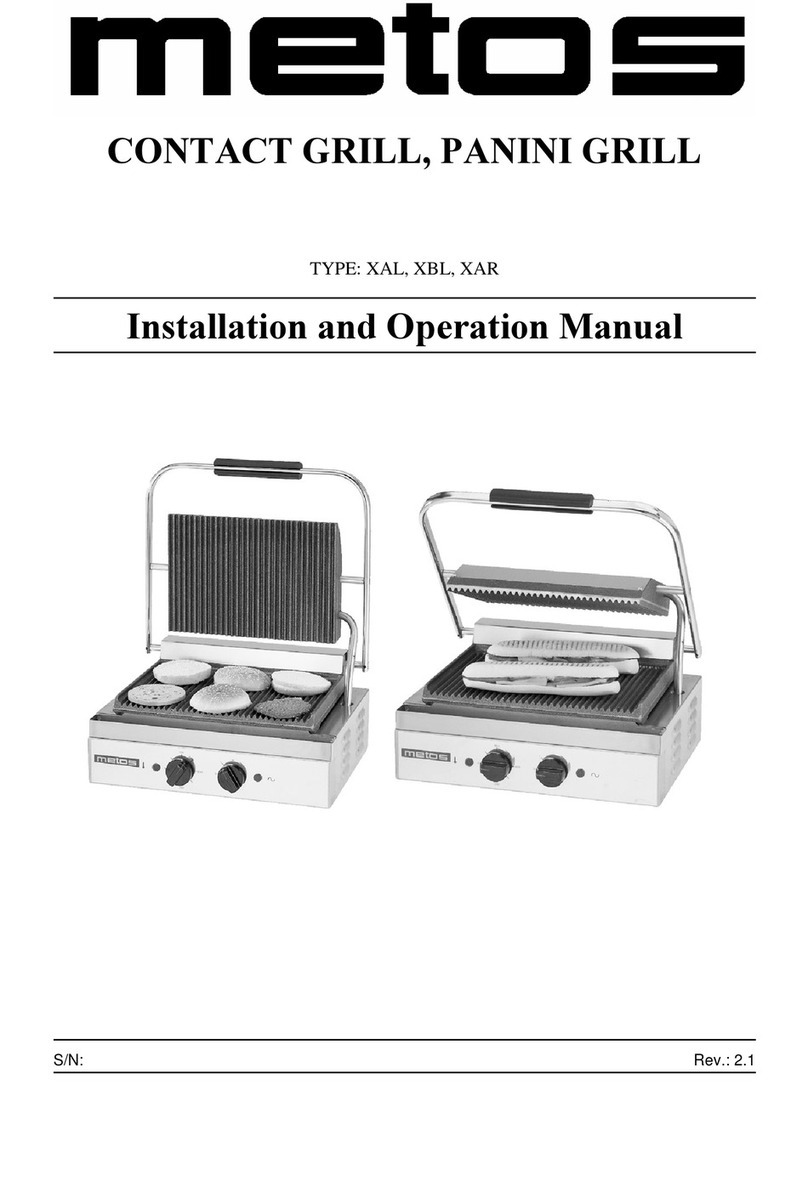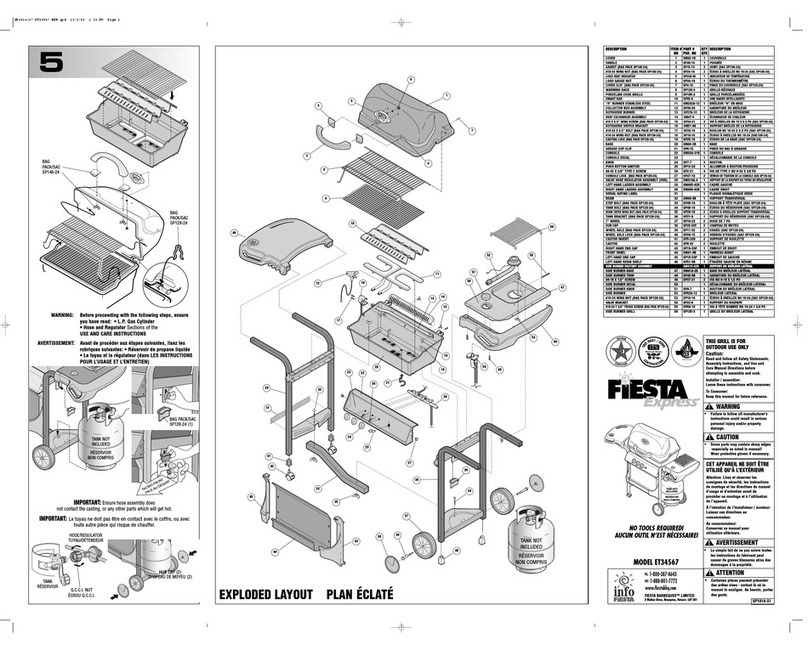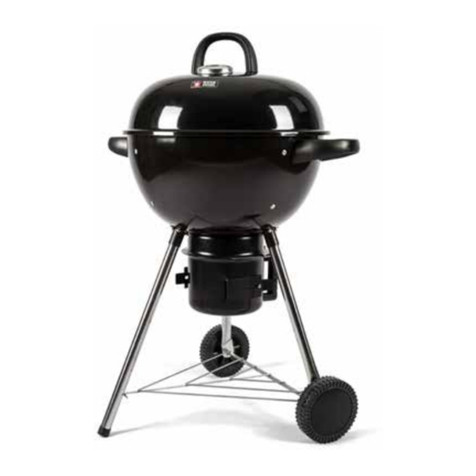
InstallationSafetyPrecautions
,Use grill, as purchased,only with LP (propane) gas and the
regulator/valve assembly supplied. If your grill is Dual Fuel
ready,a conversion kit must be purchased for use with
naturalgas.
,Grill installation must conformwith local codes, or in their
absence of local codes, with either the National Fuel Gas
Code,ANSI Z223.f/ NFPA 54, Natural Gas and Propane
Installation Code, CSAB149,1, or Propane Storage and
Handling Code, B149.2.
,All electrical accessories (such as rotisserie) mustbe
electrically grounded in accordance with local codes, or
National Electrical Code,ANSI / NFPA 70 or Canadian
Electrical Code, CSAC22./. Keep any electrical cords
and/or fuel supply hoses away from any hot surfaces.
,This grill is safety certifiedfor use in the United States
and/or Canada only. Do not modify for use in any other
location. Modification will result in a safety hazard.
LPCylinderRemoval, Transport and Storage
•Turn OFFall control knobsand LP cylinder valve. Turn coupling
nut counterclockwise by hand only - do not use tools to
disconnect. Loosen cylinder screw beneath bottom shelf or
disconnect other retention means, then lift LP cylinder up and
and out of cart. Installsafety cap onto LP cylinder valve.
Always use cap and strap supplied with valve. Failure to use
safety cap as directed may result in serious personal
injury and/or property damage.
•A disconnected LP cylinder in storage or being transported
must have a safety cap installed (asshown). Donot store an
LP cylinder in enclosed spaces such as a carport, garage,
porch, covered patio or other building. Never leave an LP
cylinder insidea vehicle which may become overheated by the
sun.
•Do notstore an LP cylinder in an area where children play.
LP Cylinder Valve
Safety Cap
Retainer Strap
LPCylinder
•The LP cylinder used with your grill must meet the
following requirements:
•Use LP cylinders only with these required measurements: 12"
(30.5cm) (diameter) x 18" (45.7 cm) (tall)with 20 lb.(9 kg.)
capacity maximum.
•LP cylinders must be constructed and marked in accordance
with specifications for LP cylinders of the U.S. Department of
Transportation (DOT) or for Canada, CAN/CSA-B339, cylinders,
spheres and tubes for transportation of dangerous goods,
Transport Canada (TC). See LP cylinder collar for marking.
•LP cylinder valve must have:
•Type 1 outlet compatiblewith
regulator or grill.
•Safety reliefvalve.
•ULlisted Overfill Protection Device (OPD). This
OPD safety feature is identified by a unique
triangular hand wheel. Use only LPcylinders
equipped with this type of valve.
OPD Hand
Wheel
•LPcylinder must be upright for vapor withdrawal and include
collar to protect LP cylinder valve. Always keep LP cylinders in
upright position during use, transit or storage.
i....... ii,_
LP cylinder in upright position
for vapor withdrawal
LP (Liquefied Petroleum Gas)
•LP gas is nontoxic, odorless and colorless when produced. For
Your Safety, LP gas has been given an odor (similar to rotten
cabbage)so that it can be smelled.
•LPgas is highly flammable and may ignite unexpectedly when
mixed with air.
LPCylinder Filling
•Use only licensed and experienced dealers.
•LP dealer must purge new cylinder before filling.
•Dealershould NEVER fill LP cylinder more than 80% of LP
cylinder volume. Volume of propane in cylinder will vary by
temperature.
•Afrosty regulator indicates gas overfill. Immediatelyclose
LP cylinder valve and call local LP gas dealer for assistance.
•Do notrelease liquid propane (LP) gas into the atmosphere.
This is a hazardous practice.
•Toremove gas from LP cylinder, contact an LP dealer or call a
local fire department for assistance. Check thetelephone
directory under "Gas Companies' for nearest certified LP
dealers.
